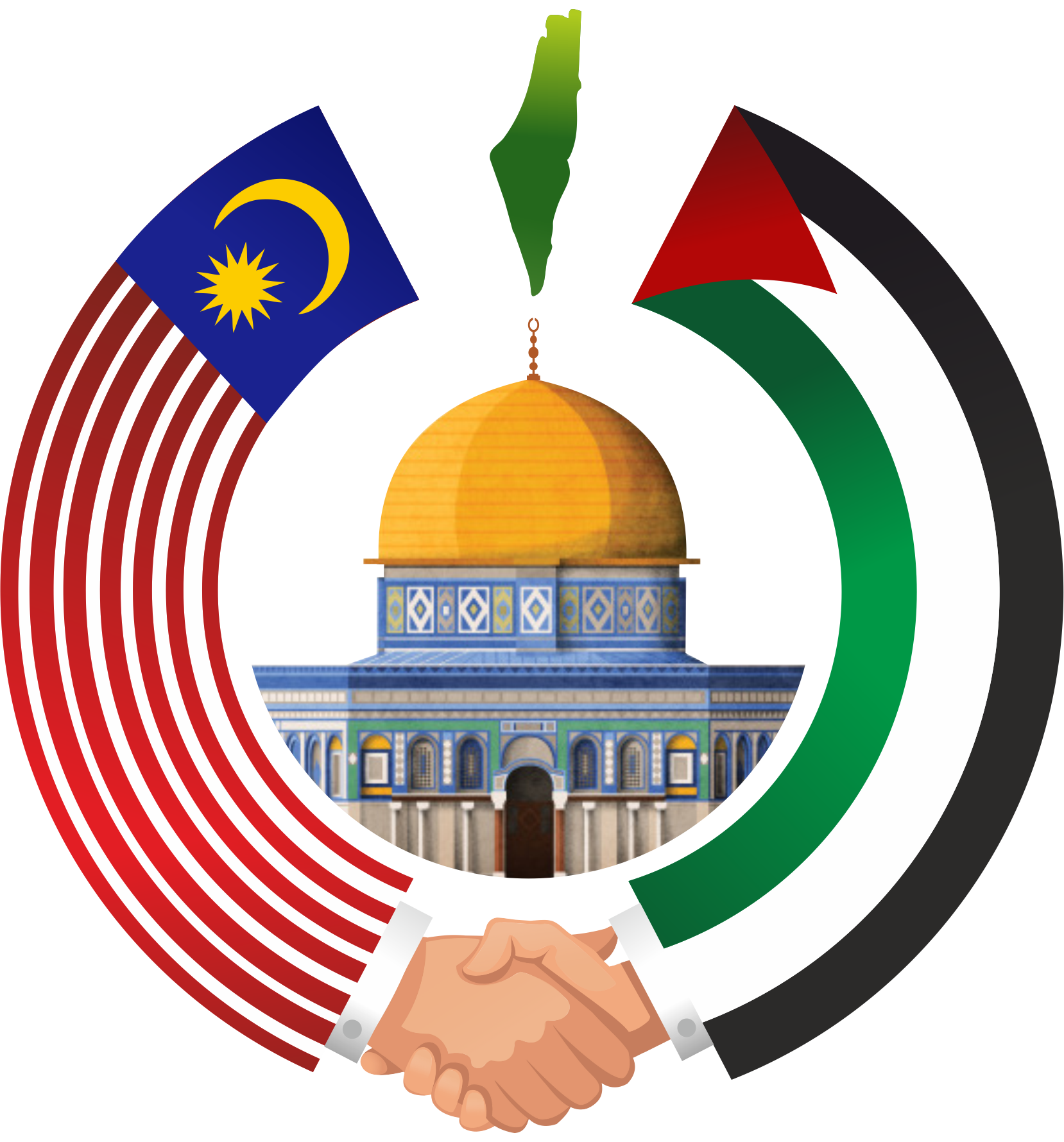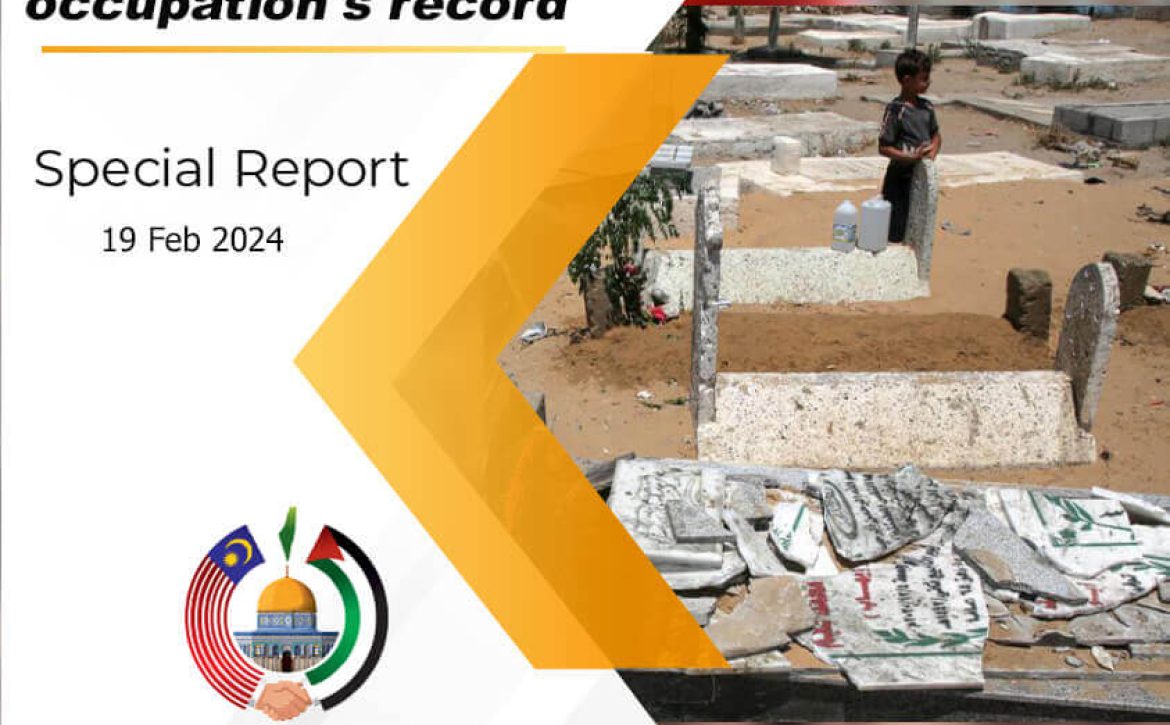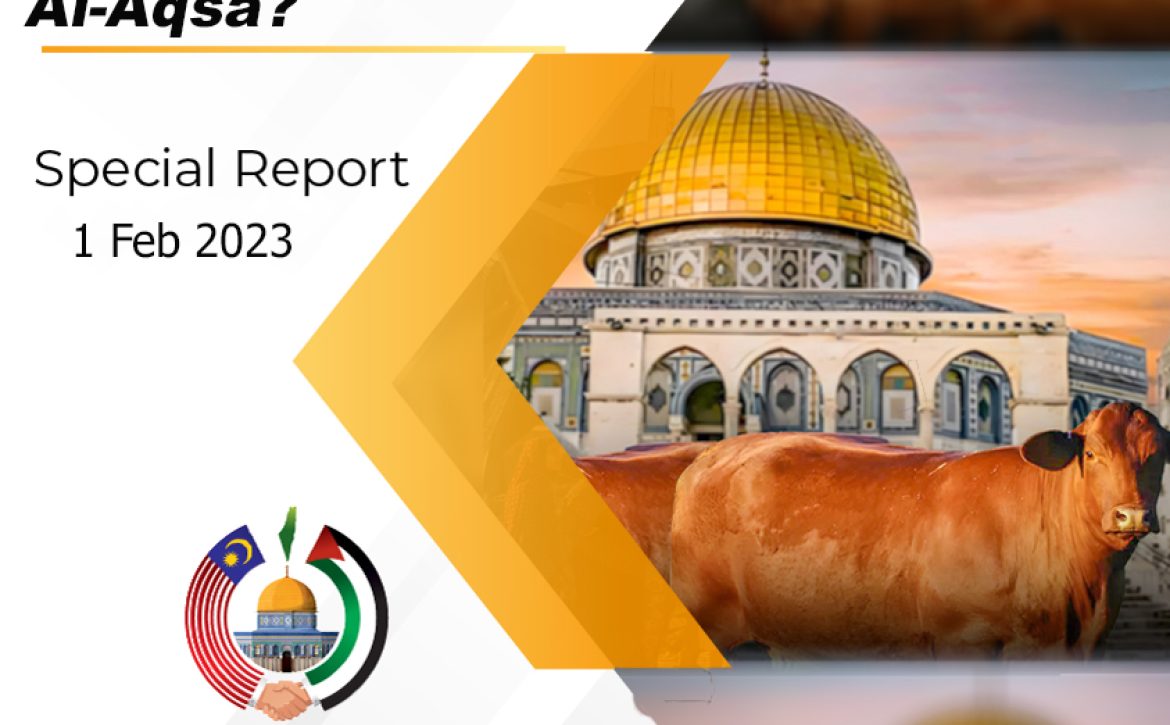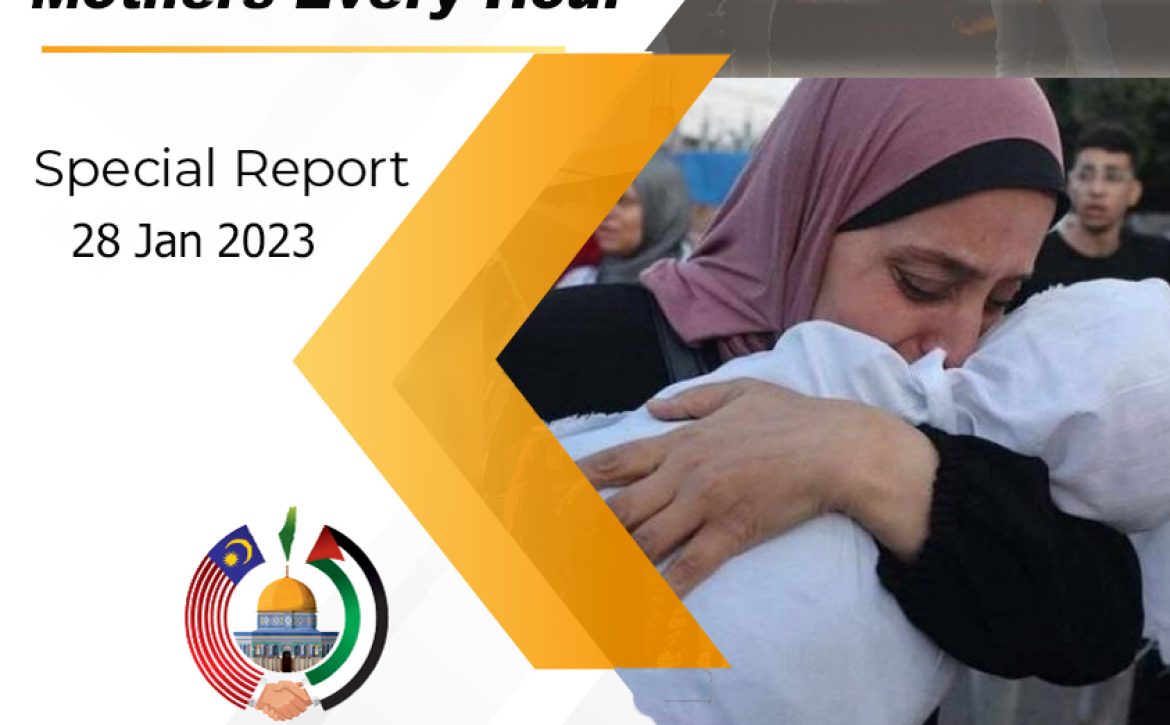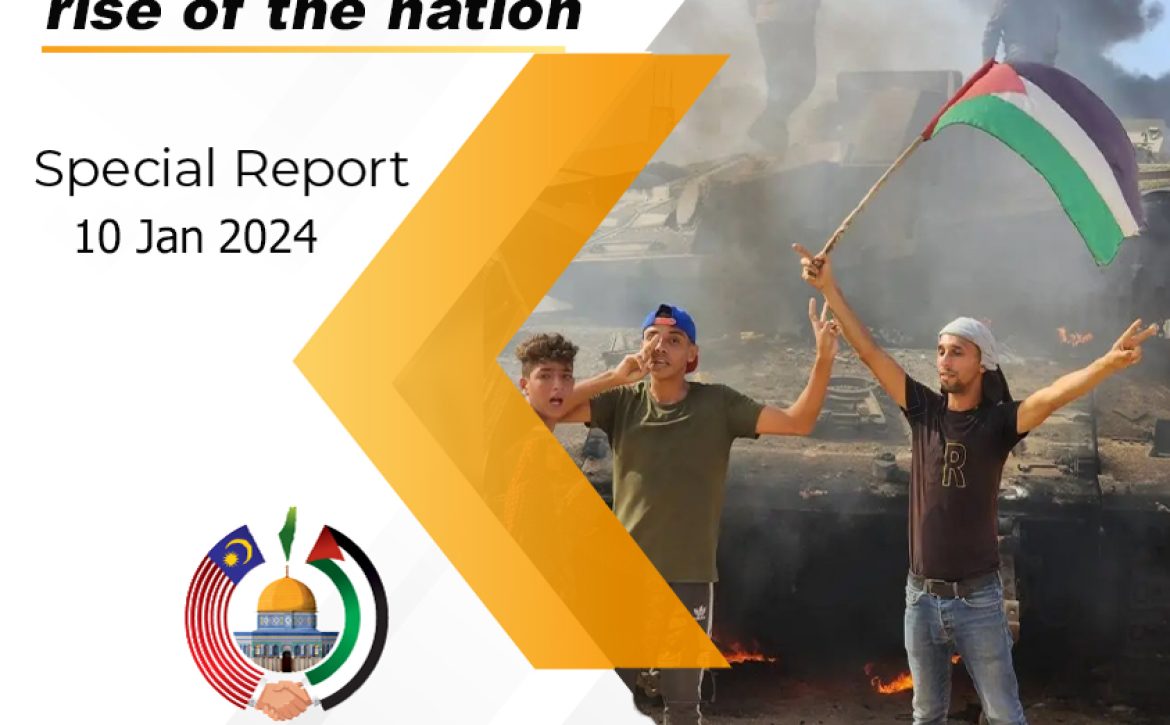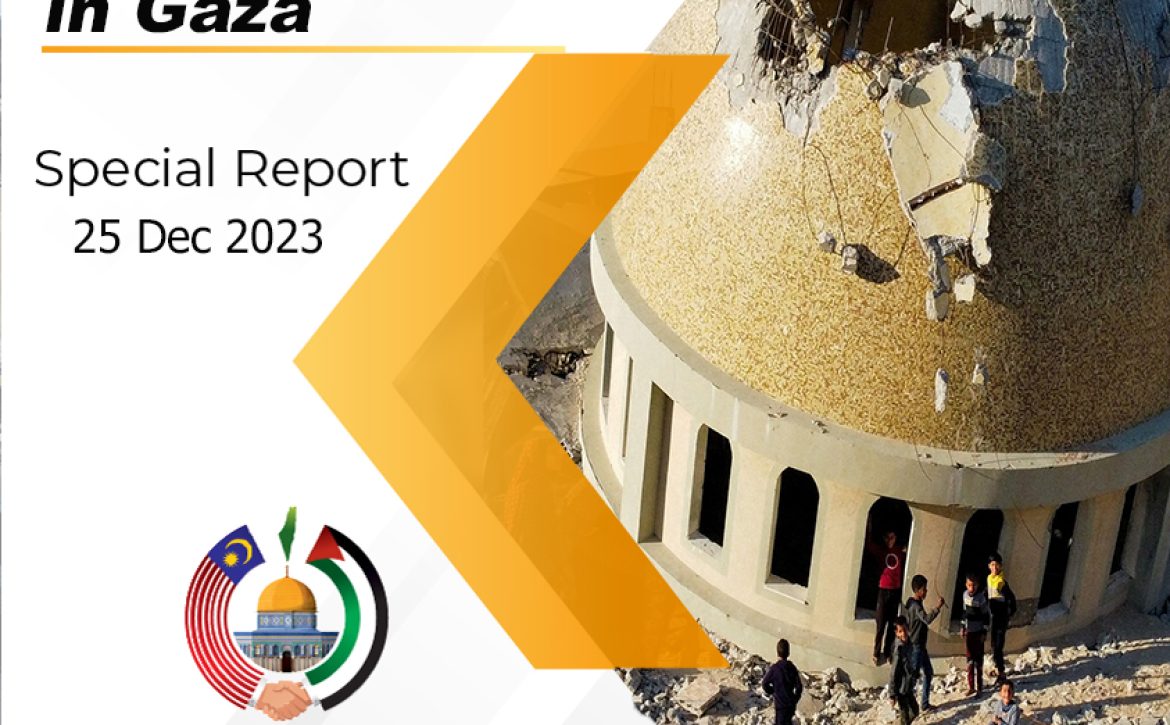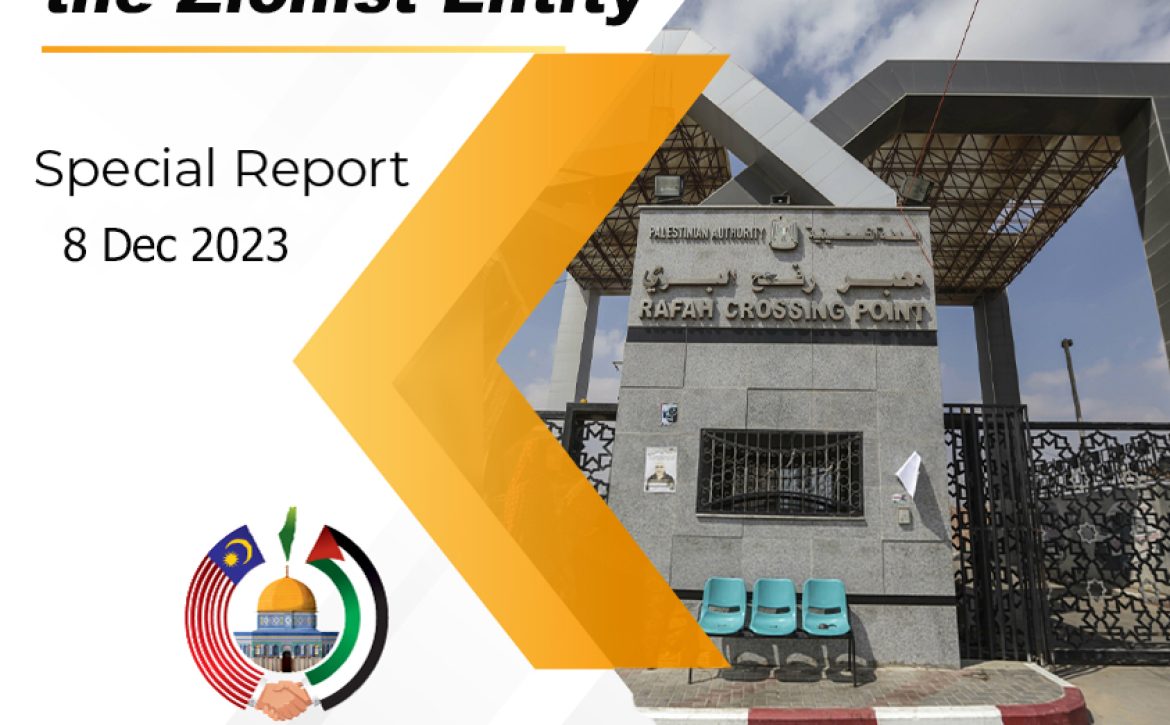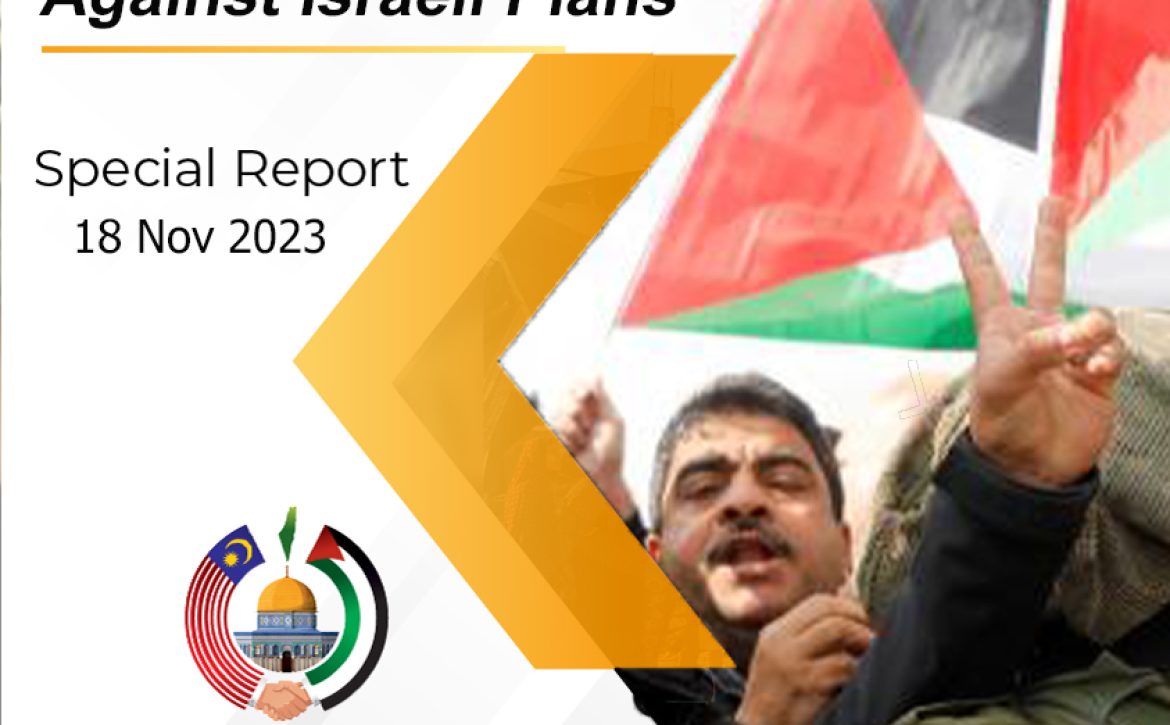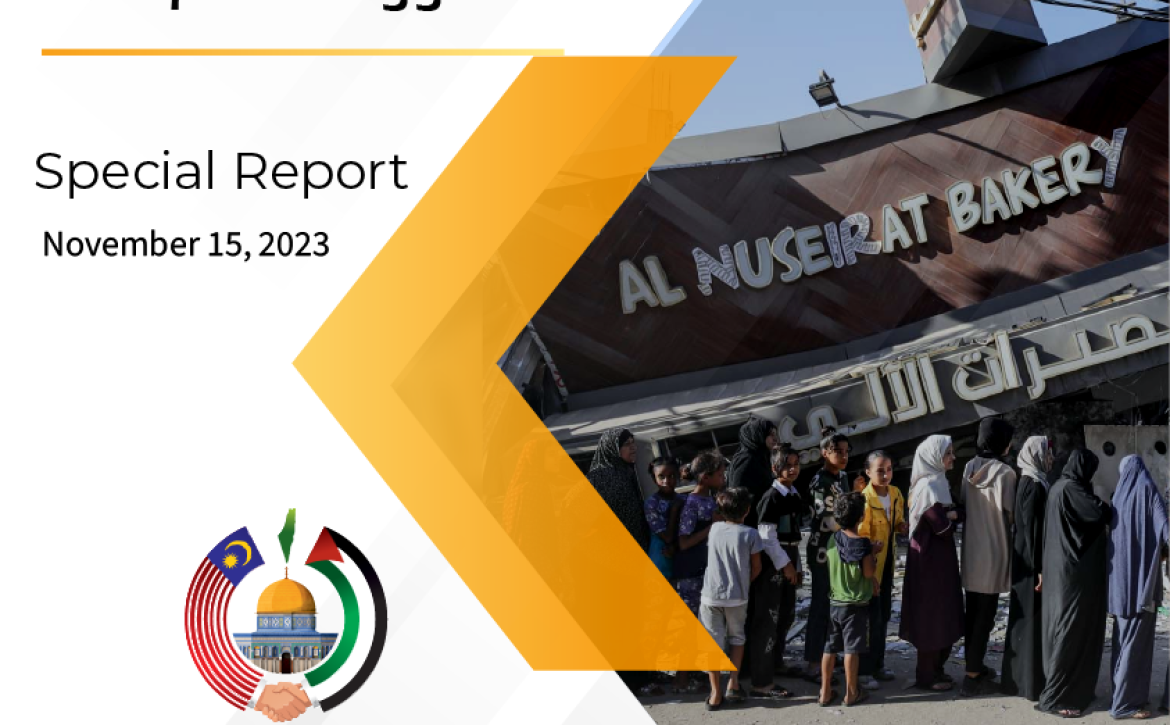Gaza is surrounded by eight crossings, six of which connect the Gaza Strip to the lands occupied in 1948, controlled by Israeli occupation authorities. Four of these crossings are completely closed, with intermittent openings for the remaining two: “Beit Hanoun” and “Kerem Shalom.” Additionally, Egypt, along with other parties, controls two crossings: “Rafah” and “Salah al-Din Gate.”
Open Crossings
The four intermittently open crossings serve as the main gateways for Gaza to and from the outside world. Two are primarily designated for individual movement: “Beit Hanoun” and “Rafah,” while the other two facilitate commercial activities: ” Kerem Abu Salem ” and “Salah al-Din Gate.”
Israeli occupation authorities impose stringent conditions on the movement of these crossings, subjecting imports and exports between Gaza and the West Bank markets, as well as external destinations, to whimsical Israeli approvals. The crossings are also prone to sudden decisions based on flimsy justifications. Since the Israeli occupation withdrawal from Gaza in 2005, the Gaza Strip has transformed into a large-scale prison, encircled by wires and barriers from all directions.
Since the victory of the Islamic Resistance Movement (Hamas) in the 2006 elections and its assumption of power, Israel tightened the blockade on Gaza. Egypt also implemented strict measures on its borders with Gaza. The suffocating blockade has subjected Gaza to deteriorating economic and humanitarian conditions. The measures enforced serve as collective punishment for the population, where freedom is severely restricted, and the daily lives of over two million Palestinians, nearly half of them children, suffer significant damage.
- Crossings with the Egyptian Side
Gaza is connected to Egypt through two crossings: “Rafah Crossing” and “Salah al-Din Gate.” Officially, neither crossing falls under Israeli occupation control.
1. Rafah Crossing
Rafah Crossing is located in the southern part of Gaza, on the Palestinian-Egyptian border, acknowledged under the peace treaty between the Israeli occupation and Egypt in 1979. The crossing operates under the Crossing Authority, part of the Ministry of Interior and National Security, overseen by the Palestinian and Egyptian administrations in partnership, and under the scrutiny of the European Union. After Hamas took control of the Palestinian side of the crossing in 2007, it opposed Israeli occupation participation in its operation. The European supervision ceased due to the absence of Palestinian Authority forces, and Europeans refused to engage with Hamas-affiliated staff. This led to the closure of the crossing. Hamas demanded the unconditional opening of Rafah Crossing and considered it a condition for any truce with the Israeli occupation or reconciliation with the Palestinian Authority. Egypt, on its part, deemed the conditions for the agreement unmet in the absence of Palestinian Authority control and European supervision. Despite having the actual capability to open Rafah Crossing, Egypt closed it due to external pressures. Over the years, the crossing alternated between openings and closures, depending on the dynamics of relations between Egypt and Hamas, often viewed as a means of pressure on Hamas by Egypt. However, Egypt typically opened the crossing for humanitarian cases during Israeli occupation attacks on Gaza, allowing the entry of humanitarian aid. On October 12, 2017, Fatah and Hamas signed a reconciliation agreement in Cairo, under which the Palestinian Authority took control of the Gaza Strip, aiming to end the ongoing internal division since mid-2007.
- The Significance of Rafah Crossing: A Lifeline to the Outside World
Rafah Crossing serves as Gaza’s gateway to the Arab Republic of Egypt, connecting the Gaza Strip to the external world. The crossing is designated for individual movement, while all cargo movement has been redirected to the Kerem Abu Salem border crossing. Egypt occasionally allows the export of Palestinian goods, especially agricultural products, a move contested by the Israeli occupation.
Following the Crossings Agreement signed between the Israeli occupation and the Palestinian Authority in November 2005, the use of the crossing is restricted to holders of Palestinian identity cards, with occasional exceptions, subject to prior notification to the Israeli occupation government and approval from the higher authorities in the Palestinian Authority. The Palestinian Authority informs the Israeli occupation government about the expected crossings of individuals from various categories, including diplomats, foreign investors, foreign representatives of recognized international bodies, and humanitarian cases, 48 hours before their crossing. The Israeli occupation government responds within 24 hours if there are any objections, specifying the reasons for objections.
- Continuous Zionist Interventions and Closures
Despite the absence of the Israeli occupation forces permanently stationed on the Egypt-Gaza border, the occupation authorities exert direct and indirect control over the opening of the crossing. The Palestinian Authority is required to inform the Israeli occupation government of the names of those wishing to use the crossing 48 hours in advance for approval or denial. The Israeli occupation suspended operations at the crossing on September 7, 2005, in preparation for its disengagement from the Gaza Strip.
On November 27, 2005, operations resumed under the Crossings Agreement, initially for 4 to 5 hours per day for three weeks due to the incomplete deployment of the Border Assistance Mission personnel from the European Union. In mid-December 2005, the working hours increased to 8 hours per day and continued at this rate into early 2006. On June 25, 2006, following the capture of Israeli soldier Gilad Shalit at the Kerem Abu Salem crossing, the Israeli occupation intensified its siege on Gaza unprecedentedly.
The Israeli occupation completely closed the crossing, except for limited hours during scattered periods, insufficient to meet the needs of Gaza’s residents, aiming to pressure Palestinians for the release of Shalit, in clear violation of the Crossings Agreement. According to the Palestinian Center for Human Rights, between November 26, 2005, and December 31, 2006, there were 159 days of complete closure, with partial openings for 31 days for limited hours. From the beginning of 2007 until January 9, 2008, the Israeli occupation authorities closed the crossing for 308 days, with the closure rate reaching around 59% from the signing of the Crossings Agreement until January 9, 2008. The crossing remained mostly closed throughout the year, opening on specific days and hours for medical cases and special situations.
In May 2018, Egypt partially reopened the crossing after years of near-permanent closure, allowing passage for five days a week with limited capacity. Rafah Crossing has been targeted multiple times by Israeli occupation forces during the “Al-Aqsa Flood” operation that began in October 2023, leading to its closure. Israel threatened to target trucks carrying fuel and humanitarian aid from Egypt to Gaza, prompting Egypt to retreat from operating Rafah Crossing. The closure of Rafah Crossing has severe consequences for Gaza’s residents, obstructing access to medical services unavailable in Gaza, undermining academic or job opportunities abroad or in the West Bank, causing significant damage to trade and business, and perpetuating the continuous separation of family members on both sides of the border, reinforcing a sense of confinement and isolation in the Gaza Strip, even in times of imminent danger.
2. Salah al-Din Gate
Located 4 kilometres from the Rafah Crossing, Salah al-Din Gate derives its name from “Salah al-Din Street,” considered the main artery connecting the northern and southern parts of the Gaza Strip. The crossing is managed by the security apparatus of the Hamas government on the Gaza side, while Egypt oversees the Egyptian side of the crossing. Salah al-Din Gate likely required implicit approval from the Israeli occupation before its opening.
Before the opening of Salah al-Din Gate, the only crossing point between Gaza and Egypt was the primarily individual-use Rafah Crossing, with Egypt allowing small quantities of goods and humanitarian aid to be delivered. Salah al-Din Gate was introduced as a commercial crossing to alleviate restrictions on the Gaza Strip, fearing a severe deterioration in the humanitarian situation. Although not a true commercial crossing, it addresses some basic needs of Gaza’s residents. Commercial activity with Egypt through Salah al-Din Gate has seen a significant development, with Gaza’s total imports through the gate increasing from 13% in 2018 to 37% in 2022. Traffic through Salah al-Din Gate constitutes 42.5% of Gaza’s commercial activity, with around a thousand trucks entering the Gaza Strip through it each month. The imported goods include food items, building materials, raw materials, fuel, and cement. The gate played a crucial role in securing a strategic stockpile of flour, rice, legumes, and oils, contributing to protecting the internal front during crises and wars. On the other hand, Israeli occupation authorities prohibit the entry of many items, claiming they have “dual-use” and fear they may reach resistance factions for weapon manufacturing and development.
After Hamas took control in Gaza, the blockade on the Gaza Strip was tightened. Despite some easing of restrictions following the Israeli aggression on Gaza in 2014, Israel and Egypt maintained strict limitations on the entry of goods into the Gaza Strip. With the deterioration of conditions inside Gaza in early 2018, the “Great Return March” protests, and short-term escalations between the occupation and resistance factions, indirect negotiations began for a long-term ceasefire to ease the siege’s intensity. Negotiations led to the opening of Salah al-Din Gate between Gaza and Egypt in February 2018. Egypt quietly opened the crossing, which had previously been a humanitarian entry point for residents on both sides of the Gaza-Sinai border. The crossing serves as a small trade passage, one-way only, between Egypt and the Gaza Strip. A private company in Gaza and another in Egypt manage the cargo transport under the supervision of the Egyptian army and Hamas in Gaza. Goods are transported in limited quantities from Egypt to Gaza through the crossing, which lacks the infrastructure to qualify as a full-fledged commercial crossing. It does not provide most of the essential needs for Gaza’s residents. The crossing opens for about ten to fifteen days a month, during which fuel and goods are brought from the Egyptian side to Gaza without undergoing Palestinian Authority customs procedures.
Open Crossings
- Beit Hanoun/Erez Crossing
Located on the northern border of the Gaza Strip, it separates the Gaza Strip from the territories occupied in 1948. The Israeli occupation authorities fully control the crossing, having the absolute freedom to allow or prevent the travel of citizens to and from the Gaza Strip. The crossing is primarily designated for the movement of vehicles and individuals, including citizens and foreigners, between the Gaza Strip and the West Bank. Diplomats, journalists, foreign missions, important personalities, workers, and Gaza traders (wishing to enter Israel with permits), as well as workers from the Gaza Strip, pass through it. It is also used for the passage of Palestinian medical cases requiring treatment outside the Gaza Strip in Israeli-controlled areas, the West Bank, or Jordan. It facilitates humanitarian cases that are granted permits to visit family, and religious sites, such as Islamic and Christian holy places, and allows residents of the Gaza Strip to visit their relatives in Israeli occupation prisons or for students to reach their universities in the West Bank.
The opportunities for residents of the Gaza Strip to enter Israel diminished over time. Since 1991, they have been required to obtain permits to exit the Gaza Strip to Israel, and the number of these permits has been reduced over the years. In 1993, a comprehensive closure was imposed on Palestinian territories, effectively applied especially to the Gaza Strip starting in 1995, in addition to the construction of an electronic wall and a cement wall around the Gaza Strip. With the beginning of the Second Intifada in September 2000, the Israeli occupation revoked many existing exit permits, reduced the issuance of new permits, and closed the crossing for longer periods. In the first year of the Intifada, the crossing was closed to Palestinian movement 72% of the days in the year. These restrictions led to a sharp decline in the number of Palestinian people in Gaza who can leave daily, dropping from around 26,000 Palestinians in the summer of 2000 to less than 900 by the end of that year. After Hamas took control of internal affairs in the Gaza Strip in 2007, the Israeli occupation imposed a comprehensive closure on the Gaza Strip and allowed Palestinians to exit the Strip based on a list of specified criteria focused on “humanitarian and exceptional cases.” Although the Israeli occupation authorities have changed some of these criteria over time, the movement of people between the Gaza Strip and the occupied land, including the West Bank and 48 territories has remained extremely limited. Most Palestinians in the Gaza Strip are not allowed to exit at all through the crossing. With the spread of the COVID-19 pandemic in March 2020, Israeli occupation authorities restricted movement through the Beit Hanoun crossing except for critical medical cases, their companions, and a few other exceptional cases.
The crossing suffers from frequent long closures, in addition to restrictions on the movement of Palestinian traders and workers to pass to the occupied territories and the West Bank. Palestinians need permits from the occupation authorities to pass through the crossing, and obtaining these permits involves complex and slow procedures that take a long time. Palestinians undergo humiliating inspections during the passage process and are forced to wait for long hours until they are allowed to pass. When passing through Beit Hanoun Crossing, travellers are required, even if they are sick, to walk a distance of over a kilometre to reach the Israeli occupation side of the crossing. Citizens or traders are often detained and interrogated by intelligence agencies that exploit the needs of citizens to travel for information, extortion, threats, or even to prevent travel or arrest.
Closure Damages
Closures hinder the daily life of the Gaza Strip, preventing the entry of traders, journalists, foreigners, and other travellers. They also cause harm to humanitarian situations, preventing the entry of patients and their companions. Closures result in significant economic losses. According to the General Union of Palestinian Workers in Gaza, the closure costs the Gaza Strip losses exceeding one million dollars daily, due to preventing about 19,000 workers from commuting to their workplaces inside the occupied territories and the West Bank.
- Crossing “Kerem Abu Salem”/”Kerem Shalom”
Located in the far southeast of the Gaza Strip, approximately 4 kilometres west of Rafah, at the junction of the borders between Egypt, the Gaza Strip, and the Israeli-occupied territories. The Israeli occupation controls the crossing in coordination with Egypt, and the “Presidential Committee for the Entry of Goods,” affiliated with the Palestinian Authority, oversees the commercial movement. After the closure of Al-Montar Crossing (northern Gaza), Kerem Abu Salem became the main gateway for the passage of goods between the occupation and the Gaza Strip. It serves as a lifeline for the residents of the Gaza Strip and is sometimes used for the passage of aid. Additionally, some Palestinians use it when they cannot use the nearby Rafah Crossing.
Approximately 57.5% of the commercial traffic in the Gaza Strip passes through it. It allows the entry of trucks carrying essential products, raw materials for industry, medical equipment, food products, livestock, fruits, fuel, and building materials. Farmers, factory owners, and traders in Gaza, who employ thousands of workers in the Strip, rely on Kerem Abu Salem Crossing to market their goods to the West Bank and foreign countries. Despite being used as an alternative to Al-Montar Crossing, its efficiency is lower. Al-Montar Crossing is only about 5 kilometres from the centre of Gaza City, while Kerem Abu Salem is about 40 kilometres away from the city centre, which is the most densely populated area in the Gaza Strip, housing most factories and commercial warehouses. The considerable distance between Kerem Abu Salem Crossing and the trade and industrial centres in the Gaza Strip, the seaports, oil refineries, and commercial crossings in the West Bank, has led to a significant increase in the transportation costs of goods to and from the Gaza Strip.
According to the “Mesarv” organization, the cost of transporting goods through Kerem Abu Salem Crossing is more than 50% higher than the cost of transportation through Al-Montar Crossing. Moreover, Kerem Abu Salem Crossing is small compared to Al-Montar Crossing, lacks suitable infrastructure for an active trade movement, operates with very limited capacity, and, on its best days, can handle only about 400 trucks, in contrast to Al-Montar Crossing, which operated with a capacity of a thousand trucks per day.
The Israeli occupation began operating the Kerem Abu Salem Crossing for the first time in 2005 to allow the entry of humanitarian aid into the Gaza Strip. It then initiated the closure of commercial crossings with the Gaza Strip, keeping only Kerem Abu Salem open, which was not originally designated as the exclusive crossing for the transport of goods to and from the Strip. Since the Israeli tightening of the closure on the Gaza Strip in June 2007 until October 2014, approximately 14 trucks per month left the Gaza Strip for export, most of them loaded with agricultural products.
On November 6, 2014, for the first time since the closure, the Israeli occupation allowed the regular marketing of goods from the Gaza Strip to the West Bank. Initially, only agricultural products were allowed to be marketed, and later products from the textile and furniture industries were also permitted. In 2019, the number of cargo trucks passing through the crossing reached about 262 trucks per month.
The crossing is subject to frequent closures, and work is restricted to specific hours. Israeli occupation authorities impose complex conditions that hinder imports and stifle exports. They occasionally use it as a card for extortion and pressure on the Islamic Resistance Movement “Hamas.” Despite the donation of a container X-ray inspection device by the Netherlands government, the cargo is unloaded and then reloaded, even if the truck has undergone a scan. There are no fuel storage tanks at the crossing, so the transport of fuel requires the presence of both an Israeli and a Palestinian truck at the same time, which slows down procedures and wastes a lot of time for coordination. The fuel transfer process from one truck to another does not allow for an accurate measurement of the quantity of fuel being transferred. Palestinian traders complain of losing thousands of litres, resulting in material losses they have to bear every month. On the other hand, Palestinians passing through Kerem Abu Salem Crossing undergo complicated procedures, humiliation, and extortion by Israeli security and intelligence agencies.
Since Kerem Abu Salem Crossing is the main commercial crossing for the Gaza Strip, through which building materials, goods, fuel, and food needed by the Gaza Strip are imported, its closure causes a significant economic and livelihood crisis. Closures and restrictions affect the agriculture and industry sectors, as well as the fish farming sector. Closures disrupt commercial and industrial life, resulting in significant losses and serious economic damage to industries, businesses, and traders. Closures prevent the marketing of goods from the Gaza Strip to the West Bank and abroad, preventing goods from reaching their natural markets. Traders and marketers suffer irreparable damages, leading to the collapse of many commercial interests, widespread unemployment, contributing to economic deterioration, and deepening reliance on humanitarian aid.
Closed Crossings
- Al-Montar /Karni Crossing
Located to the east of Gaza City, on the demarcation line between the Gaza Strip and the Israeli occupation, it is entirely controlled by the Israeli occupation. The crossing was established in 1994 after the signing of the Oslo Accords. Before its closure, it was the main and most equipped commercial passage, with advanced equipment, machinery, and infrastructure enabling active two-way trade, both imports and exports. It was designated for commercial traffic to and from the Gaza Strip, as well as for exporting vegetables to the West Bank.
According to the Crossing Agreement, it allowed the passage of 150 trucks per day, the minimum required to sustain the Palestinian economy based on World Bank estimates. The number was later increased to 400 trucks in 2006.
The crossing underwent rigorous inspections, and Israeli occupation authorities required an inspection for everything passing through, exposing any goods to potential damage and wasting a significant amount of time. The crossing imposed a financial burden on the residents of the Gaza Strip, especially traders and farmers. They were required to pay substantial amounts for transporting and importing goods. The delivery of goods from the port of Isdud was considered the most expensive in the world. Additionally, they paid Israeli occupation truck drivers more than the normal rates. Israel violated the terms of the Crossing Agreement by closing the crossing for most days of the year, opening only 150 days throughout 2007. The Israeli occupation authorities allowed only a few trucks to pass daily. The crossing operated at only about 23% of its capacity due to Israeli occupation complications, leading to a slowdown in economic growth, an increase in unemployment rates, and a significant shortage of various goods, food, and medicines in Gaza markets.
Israeli occupation authorities temporarily closed the crossing along with other crossings connecting it to Gaza in response to the capture of Israeli soldier Gilad Shalit by Palestinian resistance forces. In 2011, the occupation authorities permanently closed the crossing, leaving Kerem Abu Salem Crossing as the only commercial crossing between Israel and the Gaza Strip. In early December 2022, the Israeli occupation army initiated an operation called “Karni Auz” to dismantle the Karni Crossing on the Gaza border. This was done to complete the construction of a land barrier, in the form of a cement wall, under the pretext of “strengthening the defence line along the border with Gaza.”
- Crossing “Al-Awda”/”Sofa”
Located east of the city of Rafah, southeast of Khan Yunis, it is entirely controlled by the Zionist entity. This crossing is considered small, connecting the Gaza Strip with the occupation, designated mainly for commercial movement. Most of the traffic consists of construction materials moving in one direction toward the Gaza Strip only. Occasionally, it is used for the entry of workers. The crossing was subject to closures based on the mood of the Israeli occupying security, with extremely complex inspection procedures.
Israeli occupation security intentionally empties trucks coming from the occupation in a large yard and conducts prolonged inspections before allowing them to proceed. In 2008, the occupation authorities permanently closed it. In 2011, they used it once to bring in shipments of building materials specifically for UNRWA.
- Crossing “Al-Shuja’iya”/”Nahal Oz”
Located in the Shuja’iya neighbourhood east of Gaza City, it is entirely controlled by the Israeli occupation. Fuel and gas used to pass through it to the Gaza Strip under the supervision of an Israeli occupation company. The crossing had tanks dedicated to petroleum products (diesel and gasoline) in its western part, while the eastern part had tanks for natural gas, supplied through pipes from the Israeli occupation side to the Palestinian side of the crossing. The occupation authorities regularly closed the Shuja’iya crossing for two days each week, leading power plant workers in Gaza to cut small quantities and store them to cover the days when supply is halted. In January 2010, the crossing was completely closed, turning it into a military site.
- Crossing “Al-Qarara”/”Kissufim”
Located to the east between the areas of Khan Yunis and Deir al-Balah, it is entirely controlled by the Israeli occupation authorities. This crossing is designated for the military movement of Israeli occupation forces. The crossing has been closed since the Israeli withdrawal from the Gaza Strip in 2005, only opening for the passage of tanks and vehicles in case the occupation decides to launch an aggression on the Strip.

